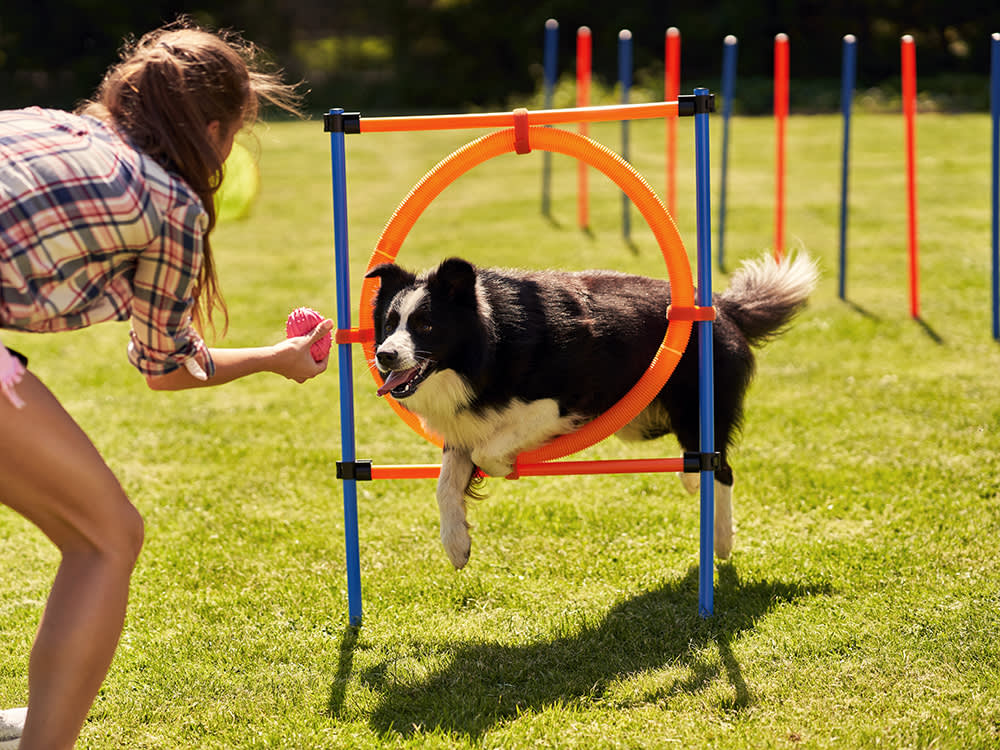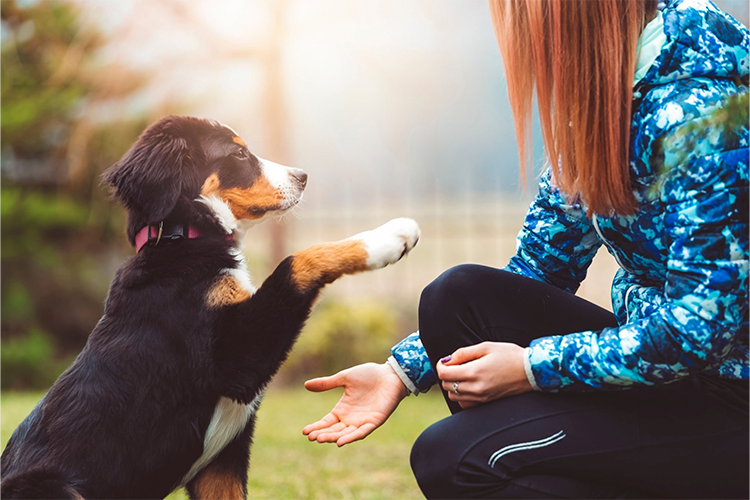Overcoming Challenges in Dog Training: Expert Advice for All Pet Owners
Overcoming Challenges in Dog Training: Expert Advice for All Pet Owners
Blog Article
Transform Your Pet's Actions With Proven Training Approaches
Changing your pet dog's behavior needs a nuanced understanding of their individual qualities and demands, along with the application of proven training methods. By utilizing positive reinforcement and recognizing essential hints in their body language, you can properly attend to typical behavior concerns such as too much barking or jumping. Uniformity in your training technique not just improves obedience yet likewise promotes a deeper bond of trust fund and regard between you and your pet. Nonetheless, the course to effective improvement might provide unpredicted challenges that warrant more exploration.
Understanding Pet Dog Habits
Comprehending pet dog actions is vital for efficient training and communication between humans and their canine buddies. Pets, as social animals, exhibit a variety of behaviors affected by genetics, atmosphere, and experiences - Dog training. Identifying these habits aids proprietors tailor their training approaches to meet the certain needs of their canines
Secret aspects of canine habits consist of body movement, vocalizations, and social interactions. As an example, a wagging tail typically shows excitement, while a reduced head may signify submission or worry. Understanding these signals can help proprietors interpret their pet dog's mood and respond suitably. Additionally, socialization plays a critical duty fit behavior; dogs that engage favorably with other animals and different individuals are generally much more adaptable and well-adjusted.
In addition, identifying tension signals-- such as panting, pacing, or avoidance habits-- can protect against rise right into much more serious problems. Owners that are in harmony with their canine's habits can create a risk-free and caring setting, cultivating count on and improving the training procedure. Inevitably, a deep understanding of canine actions lays the foundation for an unified connection and efficient training end results, guaranteeing both pet dogs and their proprietors flourish with each other.
Positive Reinforcement Strategies
Positive reinforcement strategies are commonly identified as one of the most efficient approaches for training dogs, fostering a favorable understanding environment. This approach involves gratifying preferred behaviors with deals with, appreciation, or play, therefore urging the pet dog to duplicate those habits. Unlike punitive techniques, favorable reinforcement builds count on and reinforces the bond between the pet dog and the trainer.
To carry out positive reinforcement efficiently, timing is important. Benefits should be given immediately adhering to the desired behavior to help the pet make the connection. Uniformity is additionally essential; utilizing the exact same commands and rewards aids the dog understand what is expected. Additionally, varying the benefits can keep the pet involved - Dog training. Rotating in between treats, toys, and verbal appreciation can maintain passion and motivation.
It is necessary to keep in mind that favorable support is not concerning bribery; instead, it has to do with enhancing etiquette. In time, as the pet discovers to associate details activities with favorable results, the regularity of rewards can be slowly decreased, transitioning to spoken praise or periodic rewards. This technique not only encourages obedience but likewise promotes a certain and pleased pet, making training a more delightful experience for both celebrations involved.
Dealing With Typical Problems
Attending to typical problems throughout pet dog training is essential for making sure a effective and unified connection between the canine and its proprietor. Numerous pet proprietors come across behavioral challenges, such as extreme barking, jumping, and leash drawing. Comprehending the origin of these actions is vital for effective training.
Extreme barking may originate from monotony, anxiety, or an absence of socializing. To minimize this, offer sufficient physical exercise, mental excitement, and possibilities for social interaction with both human beings and various other pets. Leaping can typically signify enjoyment or a wish for attention. Training the canine to rest upon welcoming can reroute this actions favorably.
Leash pulling is one more prevalent issue, frequently arising from a canine's passion to discover. Using appropriate leash dealing with strategies, integrated with training procedures that urge loose-leash walking, can considerably enhance this behavior.
Additionally, problems like source securing or splitting up anxiety call for tailored techniques. Progressive desensitization and counter-conditioning can be efficient in resolving these difficulties. link By identifying and proactively managing these typical issues, pet owners can promote a more pleasurable training experience and enhance the bond with their canine companions.
Uniformity in Training

To accomplish uniformity, it is crucial that all members of the household comply with the same training techniques. Using the same verbal cues and hand signals makes certain that the dog obtains consistent messages. Furthermore, the timing of corrections and rewards should correspond; prompt reinforcement enhances the probability that the dog will associate the actions with the outcome.
Regular method sessions, coupled with structured timetables for feeding, walking, and playtime, help pets expect and recognize their setting, making them much more receptive to training. Inevitably, uniformity promotes a click feeling of protection and depend on, equipping pets to learn extra successfully.
Building a Solid Bond
How can promoting a solid bond between a pet dog and its owner boost the training experience? A strong connection improved depend on and regard works as the structure for efficient training. When a canine feels secure in its link with its owner, it is a lot more most likely to display positive habits and be responsive to learning. This bond urges the dog to involve fully in training sessions, as it checks out the proprietor as a additional info source of support and support.
Additionally, a solid bond promotes better interaction. Pet dogs are proficient at checking out human hints, and a trusting connection permits for clearer signals during training. Owners that spend time in building this bond through play, socialization, and positive support produce an environment where dogs really feel inspired and eager to discover.
In addition, a well-established connection can minimize anxiousness and behavioral problems, as canines are less most likely to act out when they really feel recognized and looked after. Prioritizing the growth of a solid bond not only boosts the training experience but also contributes to a happier and a lot more well-adjusted pet. Eventually, the trip of training transforms into a collective partnership, leading to lasting behavioral improvements.
Verdict

Proprietors that are attuned to their dog's actions can create a secure and nurturing environment, fostering depend on and boosting the training process. Eventually, a deep understanding of canine habits lays the foundation for an unified relationship and efficient training outcomes, ensuring both canines and their owners flourish with each other.
Addressing common problems during canine training is essential for ensuring a harmonious and successful connection between the pet dog and its owner.Uniformity is a keystone of efficient pet training, as it establishes a clear structure for the pet dog to recognize habits and expectations.In conclusion, transforming a canine's actions with verified training techniques needs an understanding of canine habits, the application of favorable support strategies, and a focus on consistency.
Report this page